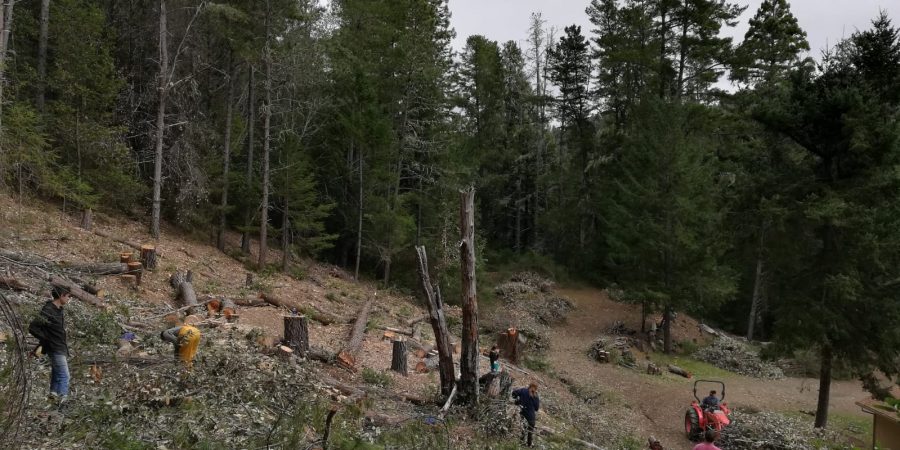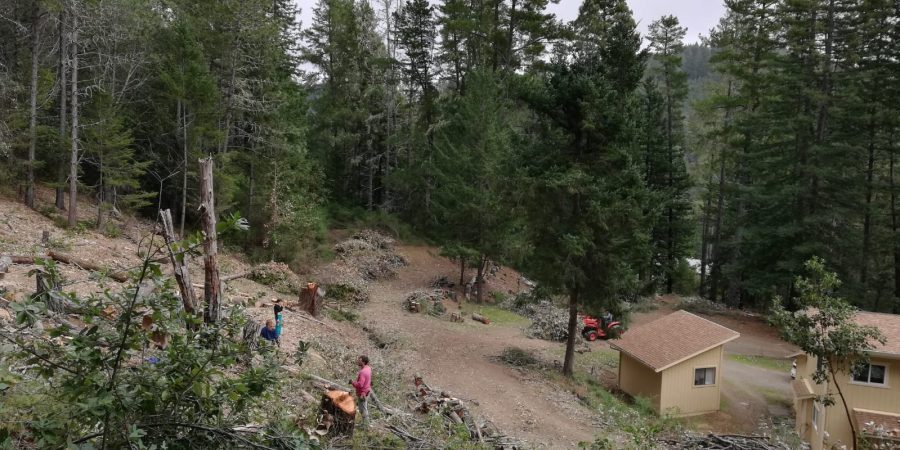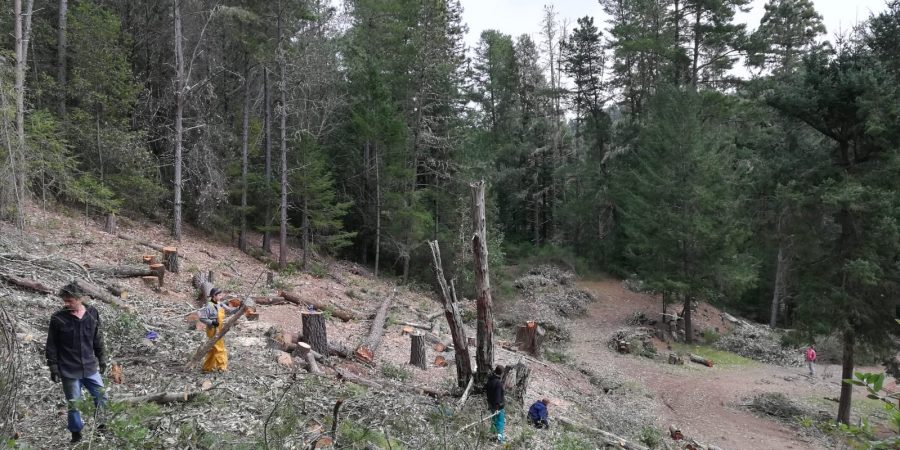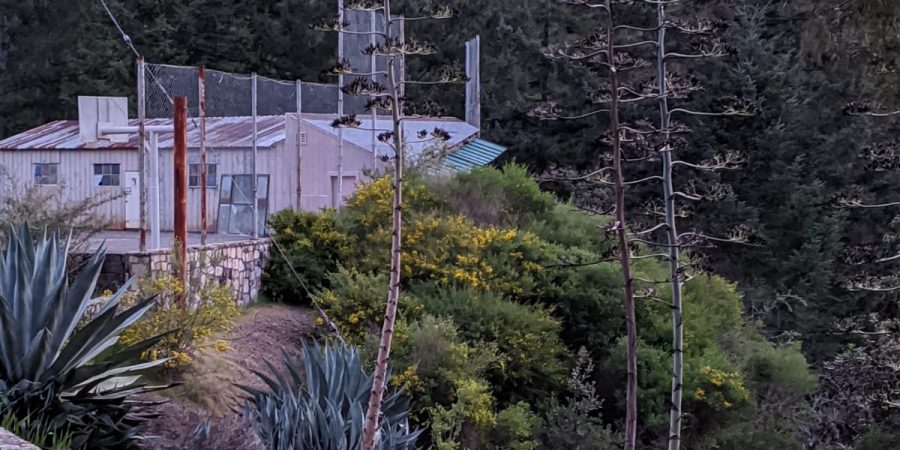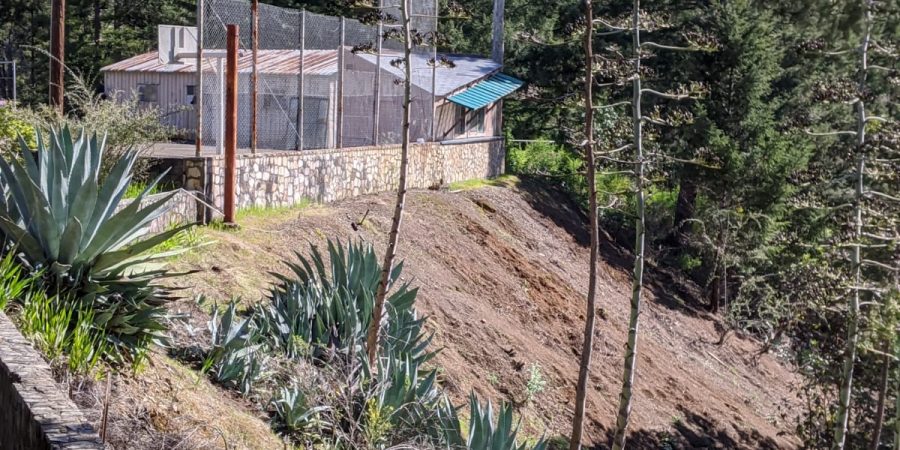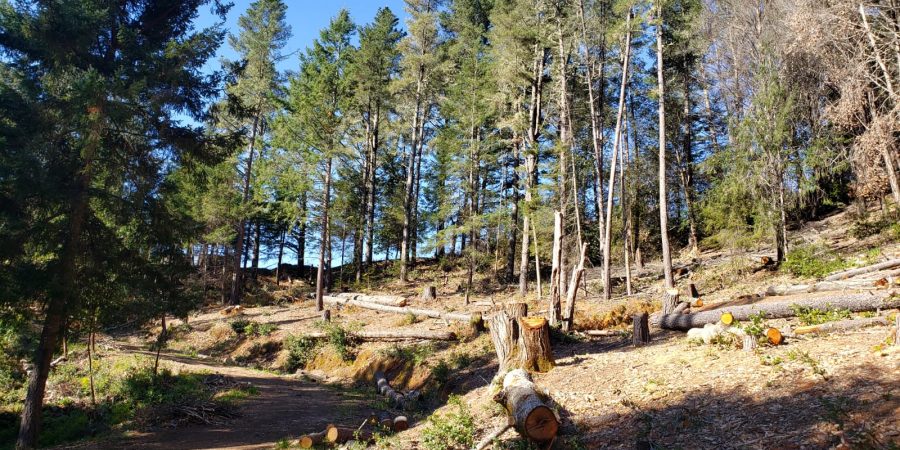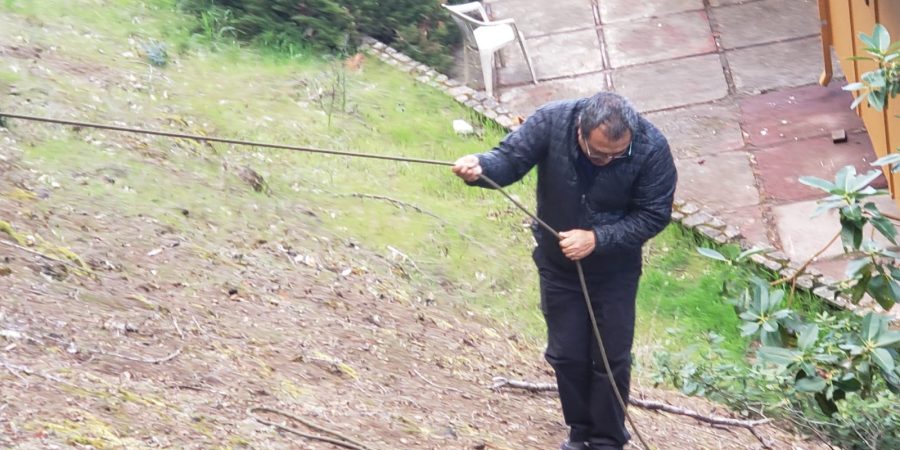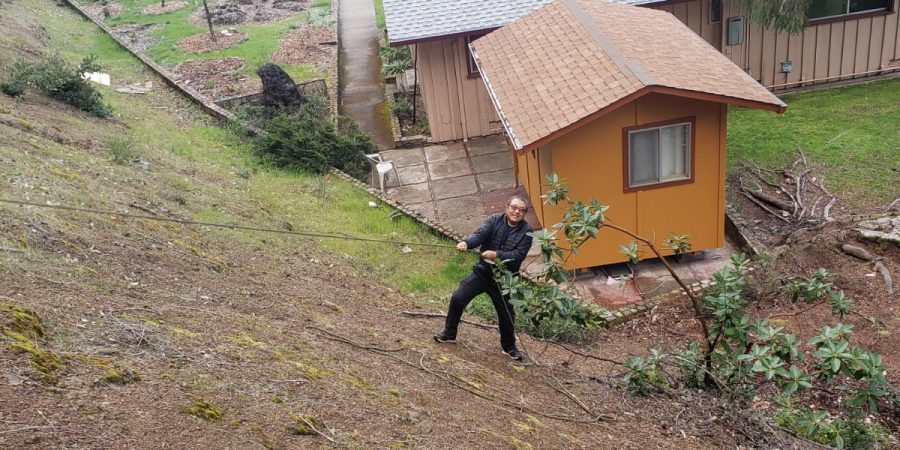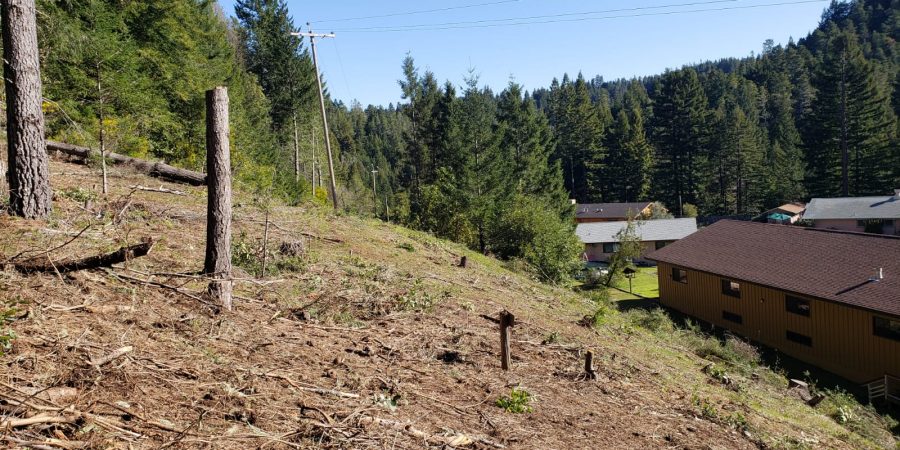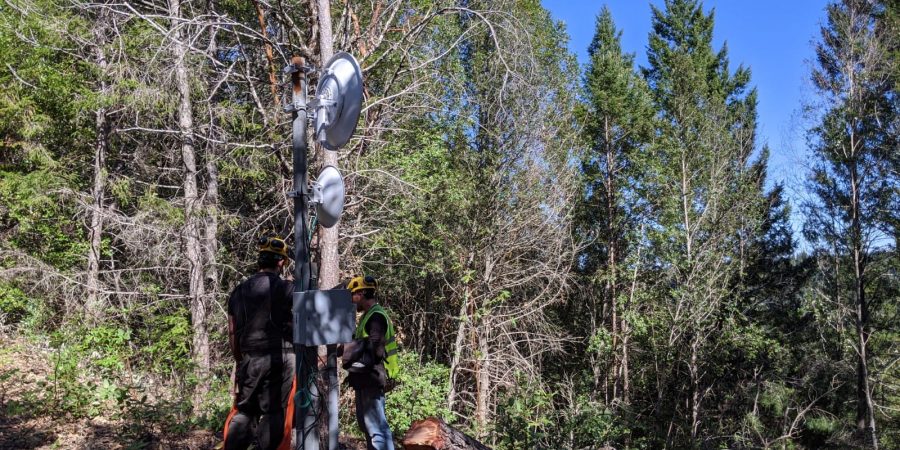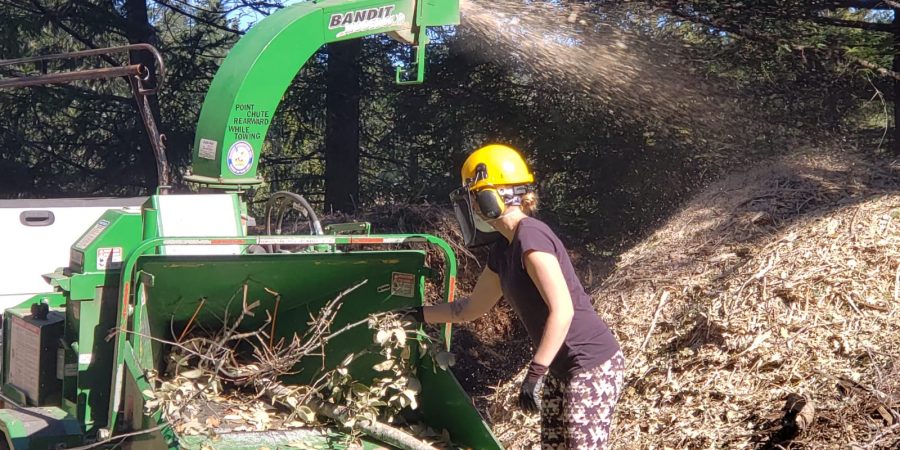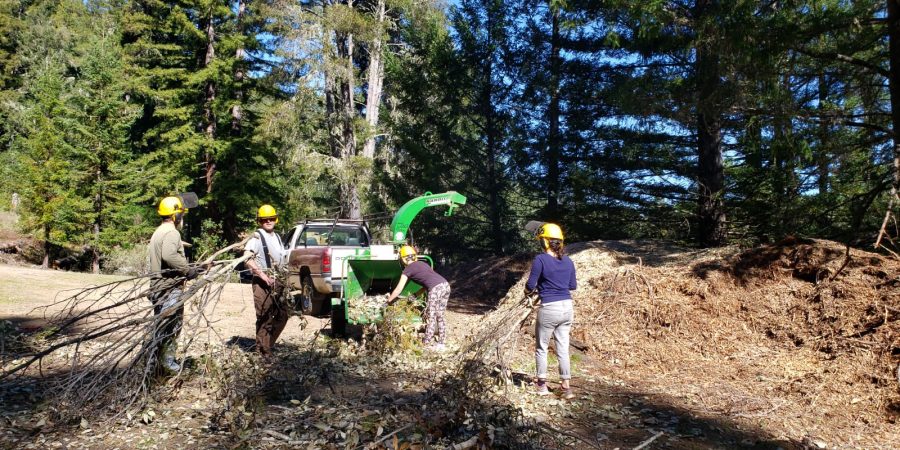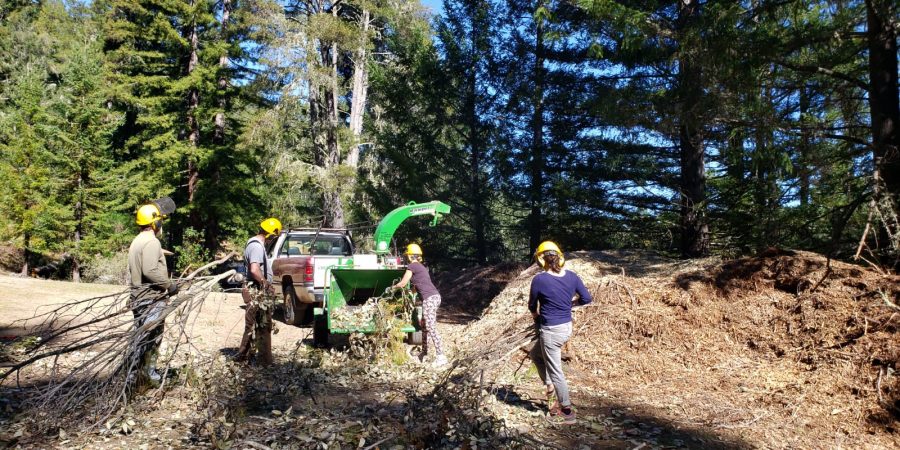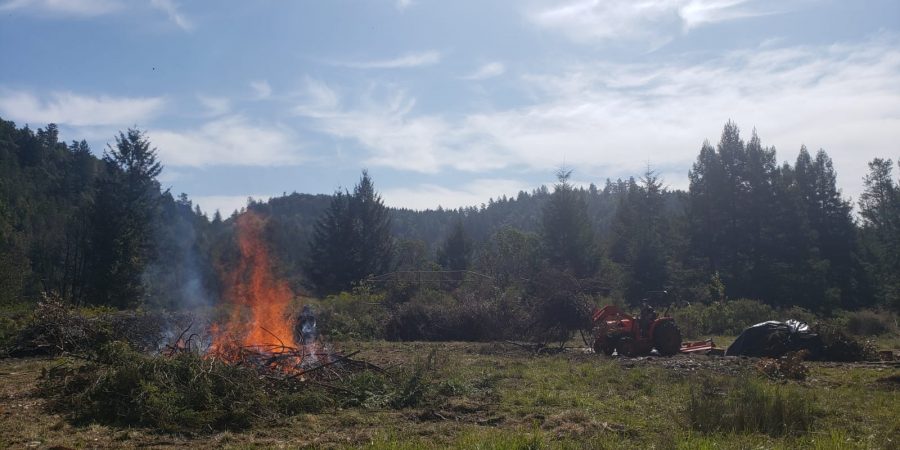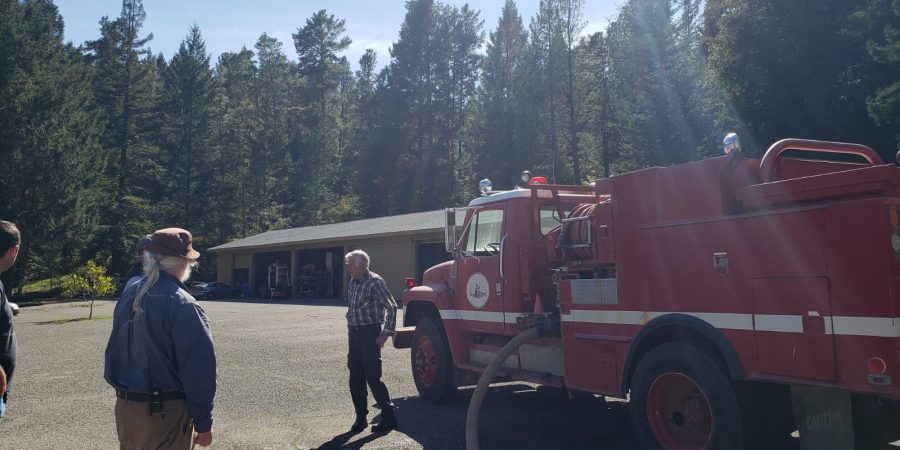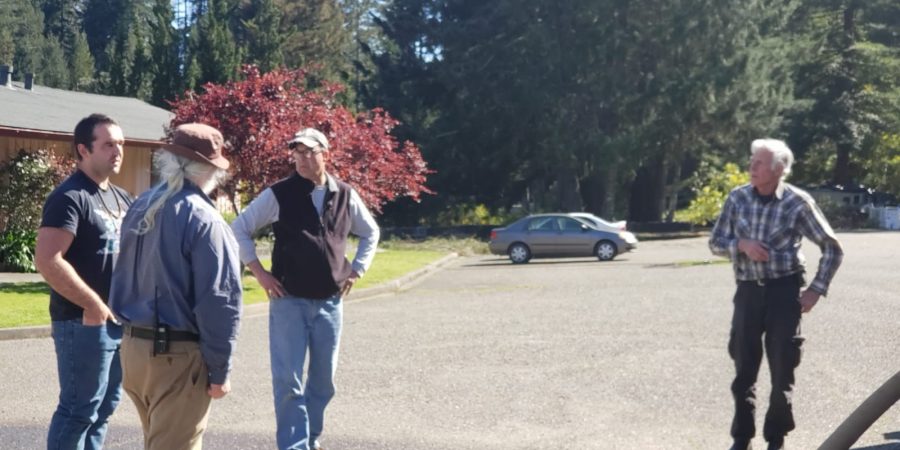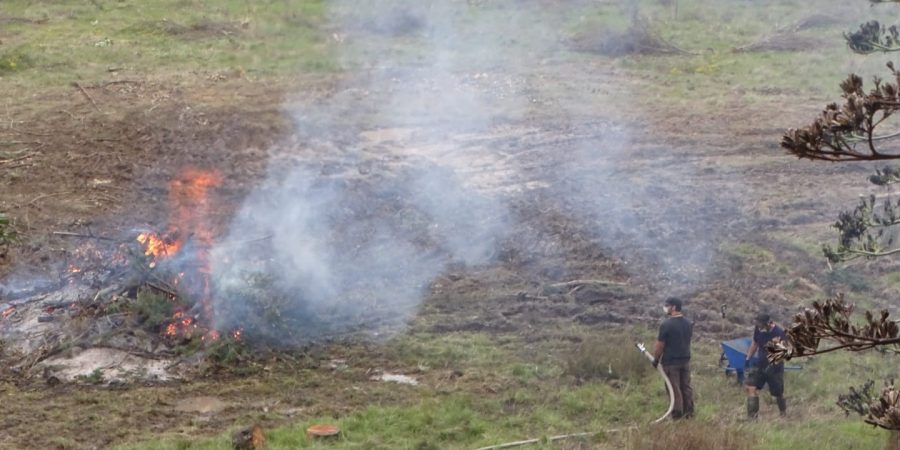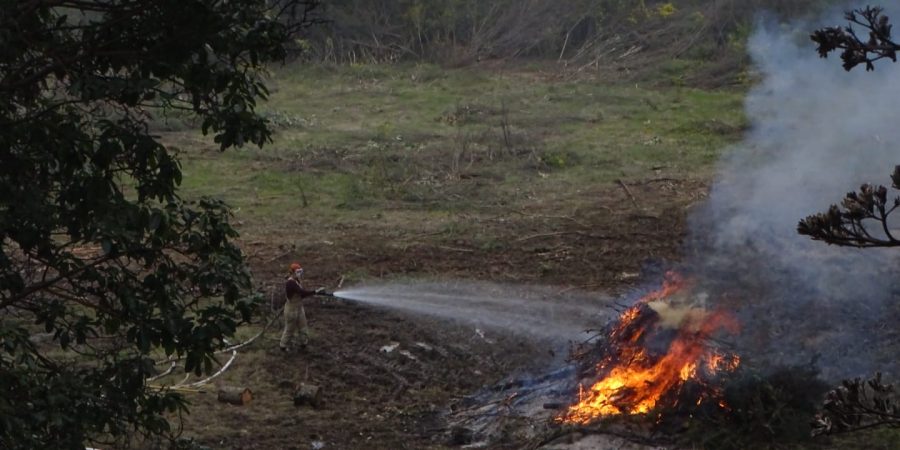We are part of the West Coast ‘good fire’ movement that is seeking to unite communities through understanding and working with fire, for the restoration and greater well-being of land, wildlife and people. Our recognition of certain historical factors (see below for more detail) is what guides our work on the land now. A further inspiration is that public and private agencies which previously were at odds over land management are now cooperating at unprecedented levels in dealing with wildfire and historical land issues.
As we plan and implement clearing and burning projects (including future “Rx” or “prescribed” burns), our aims are to:
1) place in the foreground the knowledge, activity and aspirations of Native American tribes and Indigenous researchers who are propagating fire as a tool for traditional resource and land management;
2) learn from government, academic and non-profit agencies who are focusing on fire ecology and forestry issues;
3) restore as much as possible of the land here to how it used to be, with more open space, and conditions for native species to grow in a healthy way;
4) take direct responsibility for managing fire on PPI land as safely as possible, including through formal staff training
5) build relationships of trust and cooperation with local fire officials, neighbors and community organizations
6) provide resources (on-site at PPI and online — in progress) for promoting learning about fire ecology, fire-fighting and land management
7) recognize that working mindfully on fire-ecology projects is one way to take personal responsibility for the historical damage done to land and people in the United States.
Learning about fire and land management has become a primary focus at Padmasambhava Peace Institute for the last few years. We started clearing brush in order to protect the property better in the face of huge wildfires, but gradually realized that ‘fighting fire’ is just one part of the picture.
There is growing public recognition that the current devastation from wildfire is not only related to climate change, but is also directly related to hundreds of years of mismanagement by colonial settlers. Successions of governments, corporations and individuals have failed to understand or respect how Native American peoples had so effectively worked with the land for thousands of years — what settlers first saw as pristine wilderness with abundant resources to be exploited was in fact carefully tended, nurtured land. Wildfire was allowed to regularly burn through huge areas — it is estimated that around 145 million acres burned each year in pre-colonial America, removing dead fuel, revitalizing soil and vegetation, thinning forests, and keeping grasslands open. We barely get to 10 million acres now. Fire was also deliberately introduced by Indigenous communities in small, controlled areas, each at different times of year, to allow for a variety of plants and vegetation to be revitalized or removed –a highly-targeted resource management approach currently known as ‘cultural burning‘. Cultural burning and broadcast burning were eliminated as part of the general oppression of the Native Americans, and for the maximizing of profits from natural resources. By the late 19th century, full-scale suppression of any wildland fire became official Federal policy. The last 150 years of fire suppression have produced overcrowded forests with a massive load of dead, sick and dying trees. Meanwhile settlers built further and further into the wilderness. Now when wildfire burns, it is often too hot and intense to allow for natural regeneration of the land and plants, and is also treacherous for people, the atmosphere and structures. Billions of dollars are spent trying to put out fires, instead of investing in more effective land management strategies. The ‘good fire’ movement is seeking to be part of the change needed.
This video, part of a series by the KCETLink Media Group and the Autry Museum, is a helpful introduction to some of these issues: “Tending the Wild — Cultural Burning“. Note also the points made about the positive effect of controlled burning on groundwater, vs the destruction caused by recent mega-wildfires.
What we are doing at PPI…
When the pandemic hit, all our rental activity ground to a halt, and as California introduced shelter-in-place orders which closed even the local parks and beaches, we realized how fortunate we were to still be able to do clearing work, out in the fresh air, with the help of all the fantastic volunteers who come to us through Workaway. We are eternally grateful for everyone’s help and enthusiasm during these months.
As of March 2022, we have cleared several acres around the main camp area and completed several broadcast burns. We work by hand, using hand saws, weed pullers and in some cases chain-saws — felling trees, removing lower branches, pulling out scotch broom and other bushes, then chipping or burning the piles we produce. For the broadcast burns, we are working on small (sub-one acre) units, which are carefully prepped before burning, and we are learning how to minimize use of water and drip-torch fuel while staying as safe and effective as possible.
In 2021, three full-time staff and one Workaway volunteer completed the Federal training for Basic Wildland Firefighter Type 2, consisting of online theory and a field day practicum. This was motivated by the advice of our local volunteer fire department and other fire officials, who explained that under certain circumstances, we might end up needing to shelter in place during a severe wildfire, unable to rely on local crews. The training we received through Fire Forward includes a fire-lighting component as part of local efforts to widen the practice of prescribed fire. We continue to participate in workshops organized through the Good Fire Alliance, and encourage all new volunteers to share in this learning process as much as possible.
We are extremely fortunate to also have a fully-qualified wildland firefighter and tree-feller, who is on a hot-shot crew during the fire season, and another Workawayer who is certified in chainsaw use. This two-woman chain-saw crew has been clearing crucial areas around the property, and putting together improved safety procedures for incoming volunteers. We are indebted to them for this level of contribution as we develop our clearing programs.
Below are some images from 2020. We look forward to sharing our more open space with you whenever things open up!
A chipper was hired for a few days to process the brush piles during warm, sunny days in late February 2020
We decided to plan for large pile burning instead of chipping, encouraged by input from CalFire Battalion Chief Marshall Turbeville and Jared Childress of the Good Fire Alliance.
We are particularly grateful as always to our local Volunteer Fire Department, especially Chief Steve Ginesi, and Caerleon Safford (also of Fire Safe Sonoma) who gave invaluable advice on clearing, and allowed us use of their hoses and retired truck to safely manage our major burn this week. Also we were very lucky that CalFire’s crews helped clear our back road two years ago, and this year they brought in fire-fighters training on chain-saws, who took down trees behind Jigme Rinpoche’s cabin.
The April ‘burn team’ were Dan and Woody on tractor, with Indy, Kerstin and Tankai on the hoses and extinguish.

